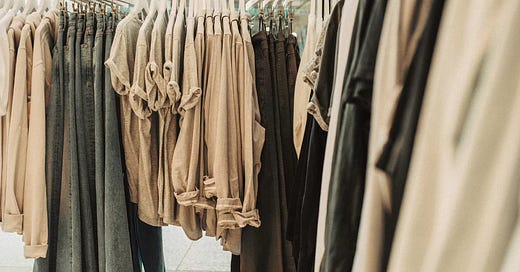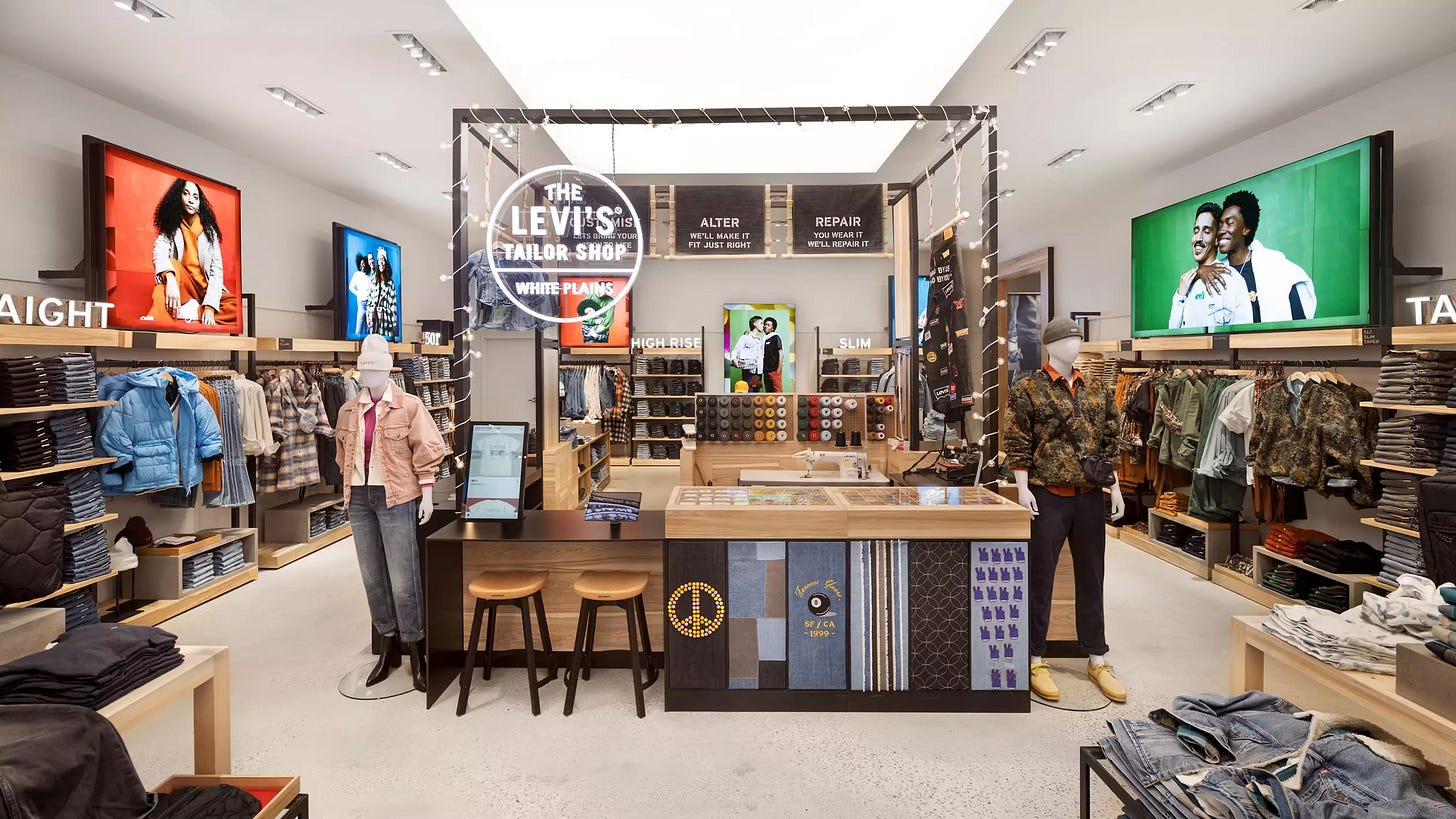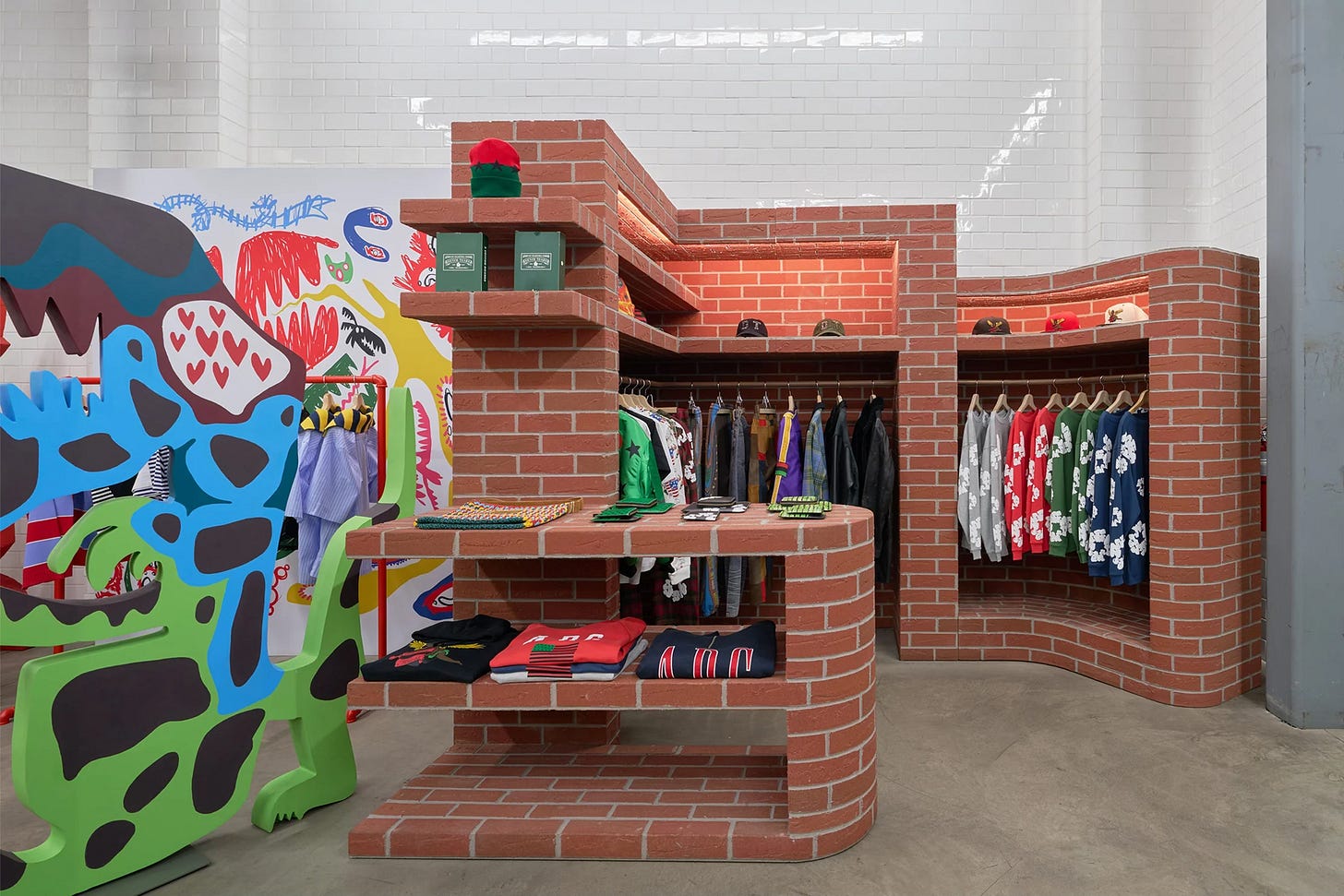Retail is experiencing a renaissance in 2025, and there's nothing quite like the tactile experience of discovering something new in a physical store. The feeling of running your hands over fabric, trying an armful of clothes on in a fitting room, and walking out with your purchase the same day is unmatched. After around 10 years of stores serving primarily as showrooms for online purchases or return centers, we're witnessing a resurgence, particularly driven by Gen Z's shopping habits.
According to recent data from the International Council of Shopping Centers, foot traffic to malls increased by 23% in 2024, with Gen Z shoppers making up 40% of that growth. Yet during a recent stroll through Westfield’s Century City mall, I realized that while retail is indeed back, it's lost its soul.
There was a time when every retailer had a distinct identity that hit you the moment you walked past. Abercrombie & Fitch assaulted your senses with cologne and models greeting customers at the entrance. Hot Topic felt like stepping into a music venue, complete with band merchandise and alternative culture vibes. Each store was a carefully curated experience that reflected a specific lifestyle and customer tribe.
Today, walking through most stores feels like navigating identical browser tabs. It's retail by algorithm. I saw the same trending items, the same aesthetic choices, and the same strategic product placements. A 2024 study by Retail Dive found that 67% of consumers couldn't distinguish between competing brands when shopping in multi-brand retailers, compared to just 34% in 2010.
After visiting a handful of different stores targeting young consumers, I experienced what felt like retail Groundhog Day. Here's the current formula that I’ve seen copy-pasted across the industry:
Licensed apparel (Ford, racing brands, vintage inspired music tees)
Sports merchandise (college, MLB, NBA)
"Streetwear-inspired" pieces mimicking brands like KITH or Aimé Leon Dore
Oversized graphic tees and boxy hoodies
Wide-leg jeans or camo cargo pants
New York or LA branded caps
This cookie-cutter approach isn't accidental either, it reflects what researcher Molly Fischer calls "the flattening of culture”, where social media algorithms create feedback loops that amplify the same trends across platforms, eventually trickling down to physical retail spaces. A McKinsey report from late 2024 noted that 78% of fashion retailers now source trend inspiration primarily from TikTok analytics rather than traditional forecasting methods.
But not every retailer has succumbed to this algorithmic approach. During my stroll around the mall, certain brands maintained their distinct identity:
J.Crew still felt unmistakably preppy and considered
Levi's maintained its authentic denim heritage
Buck Mason offered a carefully curated California minimalism
Uniqlo continued its functional, no-nonsense Japanese aesthetic
These brands succeed because they've maintained what strategist Byron Sharp calls "distinctive brand assets", the sensory and emotional cues that make a brand immediately recognizable and memorable.
Having worked retail for years, from Gap to American Eagle to Levi's to Steven Alan, I’ve witnessed this transformation firsthand. The shift from brand specific merchandising to trend chasing has created "the experience deficit". Stores have optimized for conversion rates and Instagram-worthy moments but forgotten that great retail is about creating spaces where customers feel they've discovered something uniquely aligned with who they are or aspire to be.
Research from the Harvard Business Review shows that customers who feel an emotional connection to a brand have a 306% higher lifetime value and are 71% more likely to recommend the brand to others. Yet most retailers are optimizing for a broader appeal rather than deep connection.
The antidote to retail homogenization isn't just differentiation, it's creating destinations worth traveling for. These are spaces that are so uniquely curated, that visitors feel compelled to purchase something regardless of whether they came looking for it.
Think of Dover Street Market's artful chaos, where fashion becomes gallery experience. Certain brands understand that in an age of infinite online options, physical retail must offer something irreplaceable: discovery, community, and experiences that can't be replicated through a screen.
The most exciting retail today happens at the intersection of curation and storytelling. Brands that succeed are those that resist the algorithm's pressure toward sameness and instead double down on what makes them irreplaceable. They understand that in a world where everything looks the same, differentiation isn't just a competitive advantage, it's a survival strategy.
As retail continues its comeback, the winners won't be those who follow every trend, but those brave enough to set them. The question isn't whether retail is back, it's whether it will remember what made it worth visiting in the first place.
_
Part two of this series will explore the retail experiences that remind you why physical stores matter and the spaces that turn shopping from a transaction into an adventure.







